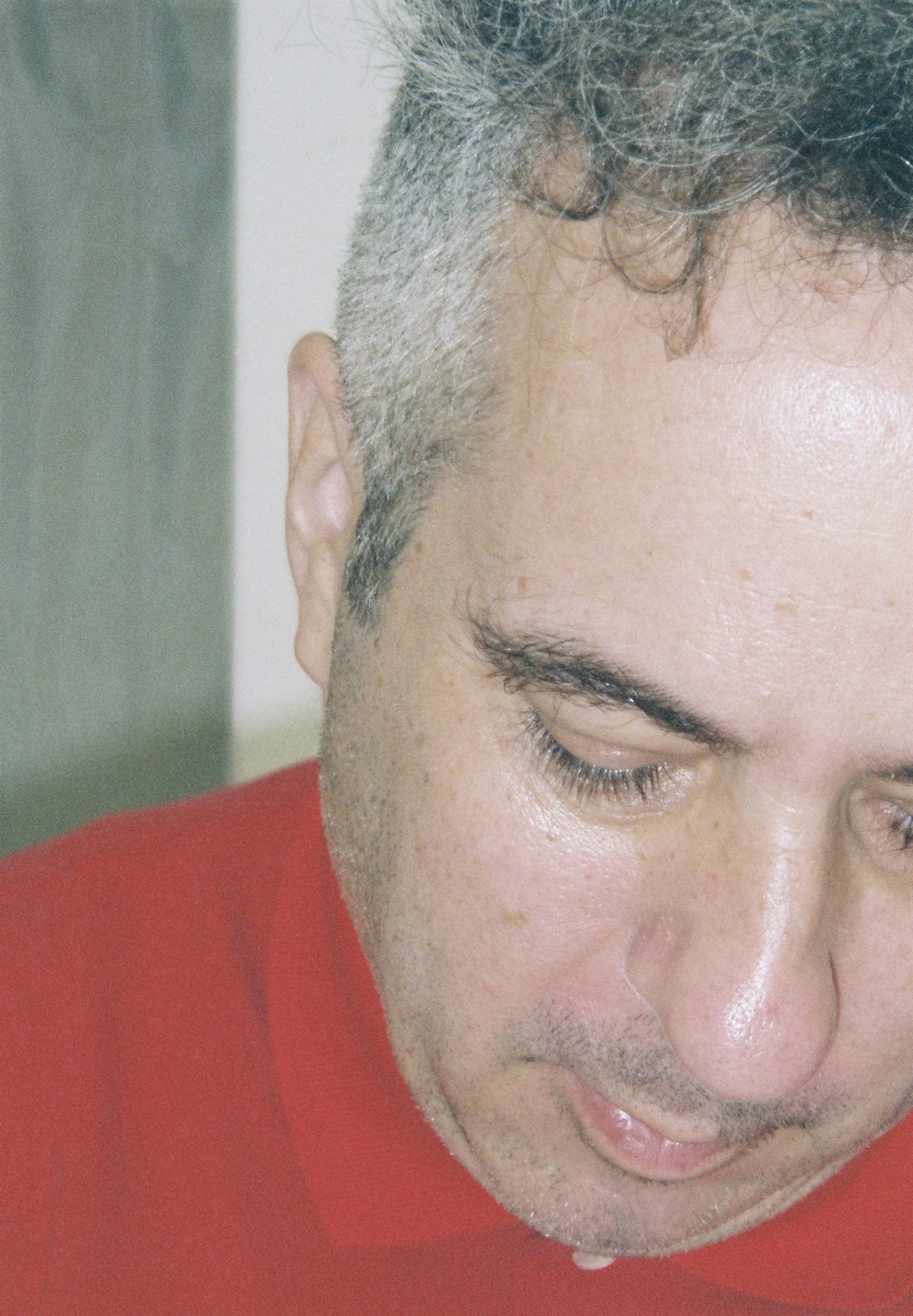
Stephen Powers
Born in 1968, Stephen Powers began his career as ESPO at the age of sixteen. Based in New York since 1994, he has engaged in various work including the publication of On The Go Magazine. Transitioning to focus on his role as an artist in 1999, he participated in prominent events such as the Venice and Liverpool Biennales. His artwork has been showcased in numerous galleries and art museums worldwide, featuring a solo exhibition title, “TODAY IS ALREADY TOMORROW” (GALLERY TARGET, Tokyo, 2014). Notably, his “LOVE LETTER TO THE CITY”, mural project, involving writing love letters, spanned twelve cities globally, from Tokyo and Sao Paulo to South Africa. In addition to managing ESPO’S ART WORLD in Brooklyn and opened ESPOKYO in Harajuku in June 2023.
The other day, as I boarded the train with my heavy bags, I scanned the train car to see if anyone was giving me cold looks, yet no one seemed to care. The dimly lit, pallid faces were all slumped at the same angle, their souls absorbed by their cell phone screens, their bodies swaying with the motion of the train. The sight sent shivers down my spine, making me ponder if, perhaps, I was one of them, just not on this particular day.
Even when told, “take as many as you want”, there’s a limit to how many candies one can grab at once. Hence, it’s only natural to consider that something significant is being sacrificed for the sake of convenience. While having access to diverse information is crucial, its value diminishes if we can’t use it effectively. Information is just a tool for survival, and the act of collecting it should not be the sole purpose of life. Yet, impeceptivly, we find ourselves engulfed by the deluge of information inundating our lives. We begin to forget our initial goals, and even lose sight of where we are amidst the hustle of our individual lives. Once lost, unfortunately, the chances of rescue are minimal. There is nothing more futile than finding contentment solely in the notion of knowing something. However, finding people and opportunities to guide us in the right direction proves to be a challenging task.
We interviewed Stephen Powers, also known as ESPO, an artist originally from Philadelphia and currently based in New York. While many may recognize him from his appearance at the beginning of the film Beautiful Losers, his career initially began in the graffiti world. As you may know, graffiti is illegal. Hence why it operates under a set of unspoken rules known only to insiders, maintaining a strict sense of secrecy. Exclusive graffiti groups, referred to as “crews”, are formed according to region and affinity, with one’s crew affiliation directly influencing their graffiti style. Thus why graffiti writers fundamentally acknowledge only themselves. That’s where ESPO is special. Despite retiring from the field, he continues to garner respect from both seasoned and emerging writers globally. His influence has transceneded the East Coast of the U.S., reaching graffiti writers worldwide who operate in the shadows. This alone attests to his originality and the value he brings, solidifying his status as a certified legend. Any graffiti artist unfamiliar is surely a fake. However, ESPO doesn’t dwell on his past glory, nor does he flaunt it. Instead, he remains approachable and kind , defying any preconceived notions one might have about his background. Despite likely facing many life-threatening situations, he exudes the grace of a seasoned individual.
His works, characterized by simple, pop pictures and humorous, ironic words, appeal across age and gender spectrums. His creations are crafted in such a way that they offer relief to eyes and brains wearied by life’s challenges. After the interview, I realized that his polite inquiries stemmed from a genuine desire for dialogue. The warmth I felt in my chest with him contrasted with the chill I experienced on the train. In his presence, I sensed charm, which deterred me from any inclination to pick on his perfectly fitted polo shirt and mismatched socks. Strangely enough, his outfit complemented him, making him look effortlessly cool. I resisted the temptation to imitate his look, realizing it wouldn’t suit me. This further confirmed that true fashion goes beyond trends. We delved into his past and the future of ESPOKYO, his venture in Harajuku, during the interview.

“Japan has been a continuous influence since my visit in 2000”
–– I’d like to start by asking you about ESPOKYO. In an age where you can purchase anything with a click of a button, why establish a store in Harajuku, 10,000 km away from Brooklyn, where you live?
ESPO: That’s true, and there are several reasons why… The most crucial point is that Japan has been a continuous influence since my visit in 2000. That experience is connected to myself and many of my works to date. Back then was the dawn of the Great Cellphone Age. I can’t recall where, but there were plastic cellphones displayed outside with emojis on their screens. I had never seen emojis until then, and I knew that this is going to turn everything upside down.
Suddenly, I reflected on the origins of my creations. People relied on drawings for much of their communication before they could read or write. Symbols and drawings were used in place of letters. The mark on my polo shirt, for example, is quite old. It’s a symbol from the U.K. wool textile industry. How much wool the shepherds collected directly affected their livelihoods… this is gonna be a long story, so I’ll stop there.
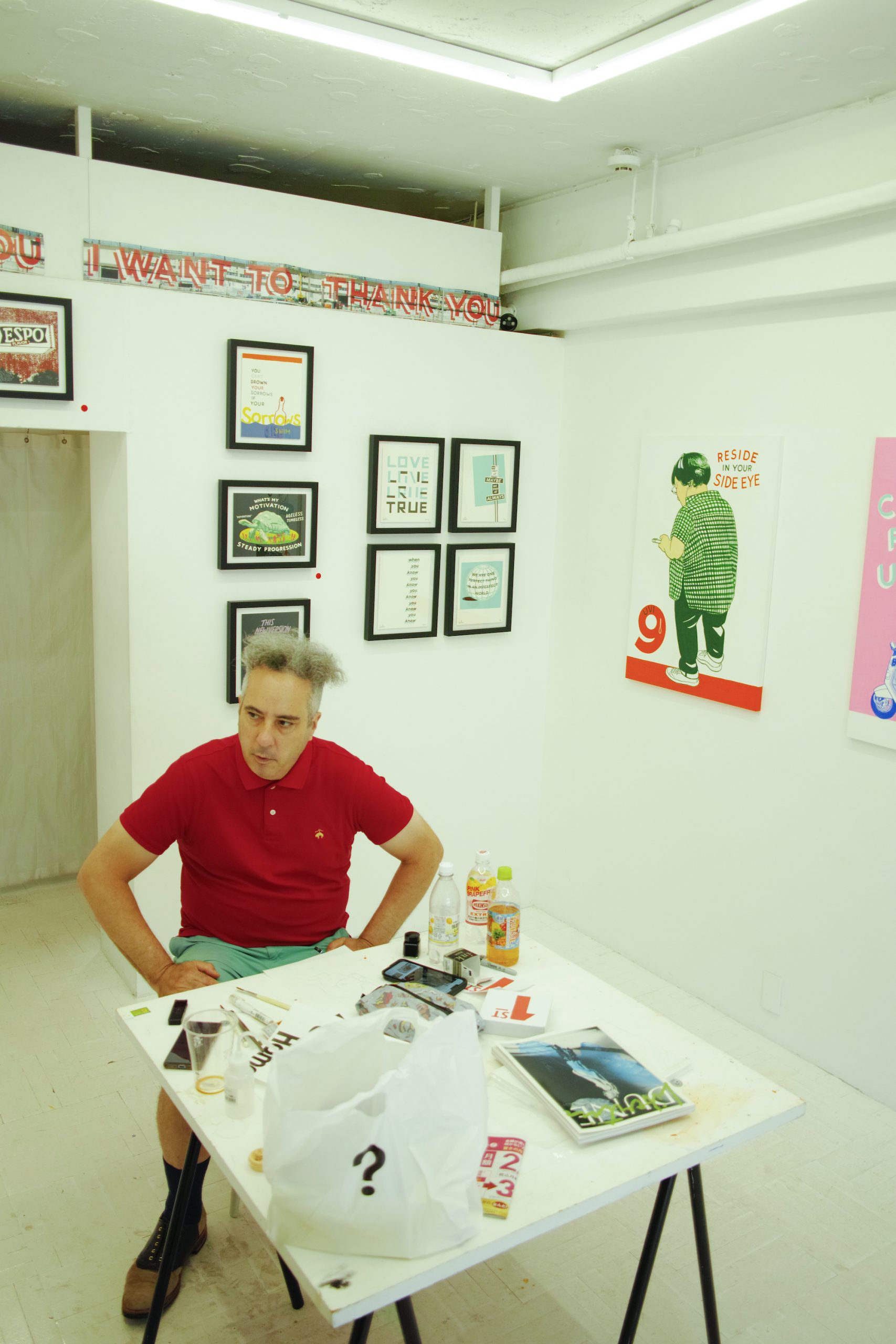
The gist of what I wanted to convey is that before written language became prevalent, drawings were used to depict things, express oneself, or facilitate understanding. Even a small drawing held significant importance. While pondering all of this, I had a realization. Neanderthals were creating drawings 340,000 years ago, and initially, I perceived those drawings as simple. Seeing a ladder-like object in one of the drawings, I thought, “I see, they’re illustrating tools”. Perhaps they sought to communicate a lifestyle better than the one they had found. In this way, I think their method of communicating through drawings significatly influenced their spirituality and humanity.
Reflecting on my artistic journey, I contemplated my beginnings in graffiti. How could I not be fascinated by ancient murals? They are all remarkable, and there’s something to learn from each of them. Then I bagan to think of myself as a modern-day cave muralist. What I do now is communicate with the world in the simplest way possible. Conveying ideas in a straightforward way and presenting complex ideas in a simple manner is something I’ve been doing and want to continue doing. During my time in Japan, I was similarly struck by what I experienced. I thought, “Hold on, they’re communicating with just emojis. They’re way ahead of me”. In fact, the pace at which society progressed increased rapidly.
So I thought, “Alright then, I’ll create pure and original emojis”. It’s a hybrid, a combination of text and images shown together. But it’s not a particularly revolutionary invention. Everyone uses a blend of letters and emojis when texting. Humans have evolved alongside the growing complexity of language. Recently, slang has become the easiest form of language to comprehend, which is normal. If someone were asked what “LOL” meant, no one would respond seriously, right? It’s just necessary. I also realized during my time in Japan this time around that there is usually a telephone symbol in front of a phone number. I find that very interesting! Because that black analog telephone is something kids nowadays have probably never even touched. Yet, any kid would see that symbol and recognize it as a phone. That’s kind of cool.
To me, for instance, lightbulbs represent ideas. (Points to his work pictured below) You see a cracked lightbult here. That signifies it’s a bad idea. Unfortunately, most lincandescnet ightbulbs in the US have disappeared and have been replaced by LED lights. But I don’t like LEDs. They hurt my eyes, and I don’t like how photos taken under those lights turn out. I prefer the feeling of the bulb burning and flickering.
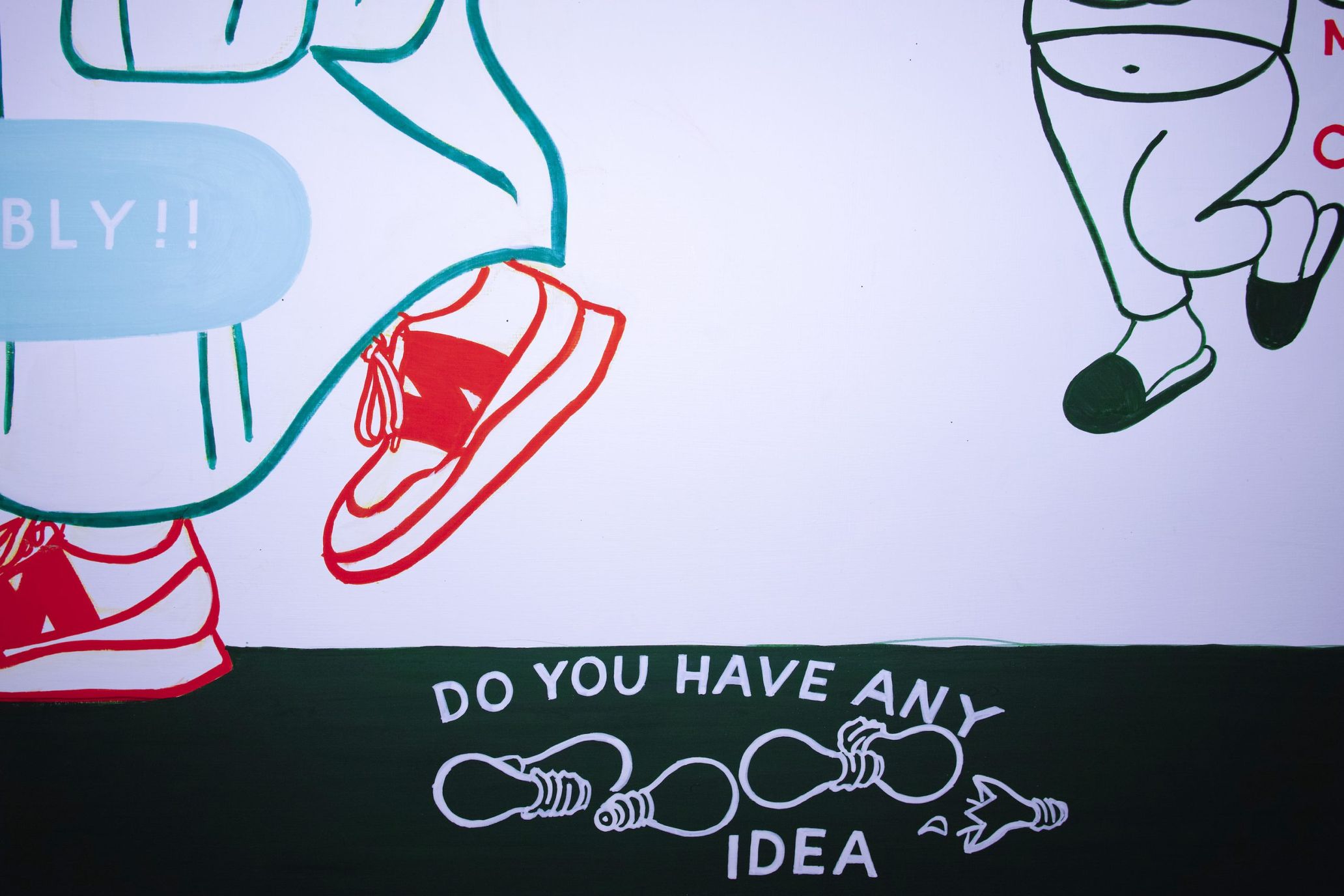
So, I’m here now. One significant reason for that is because I want to repay Tokyo. I’ve received a lot from this city, and now I can finally give back. I’m always aspiring to become a better artist, and that requires me to engage with many people. That’s why I’ve been eager to study Japanese – it’s enjoyable to converse with new people.
–– I didn’t know that Tokyo has influenced your work so much. Do you feel the same inspiration during your stay this time?
ESPO: I’m not sure yet, but I’m sure it’ll happen. I also like to see how things turn out. Not everyone seeks change, but not everyone has to change. Though my life seems destined to keep evolving.
–– Did you start this to be connected to more people?
ESPO: I did. I don’t know how long it’ll take for what I’m doing to reach people, but I thought I’d give it a shot. It’s not like any big companies are backing me, but various individuals are providing me with a lot of support, which, in turn, motivates me. Tokyo gives me a lot of inspiration. It’s such a charming, beautiful space, which is why my works born here are equally beautiful. I don’t need a dramatic turn of events; all I need to do is resonate with everyone. I want to show my gratitude for that and give back a little at a time.
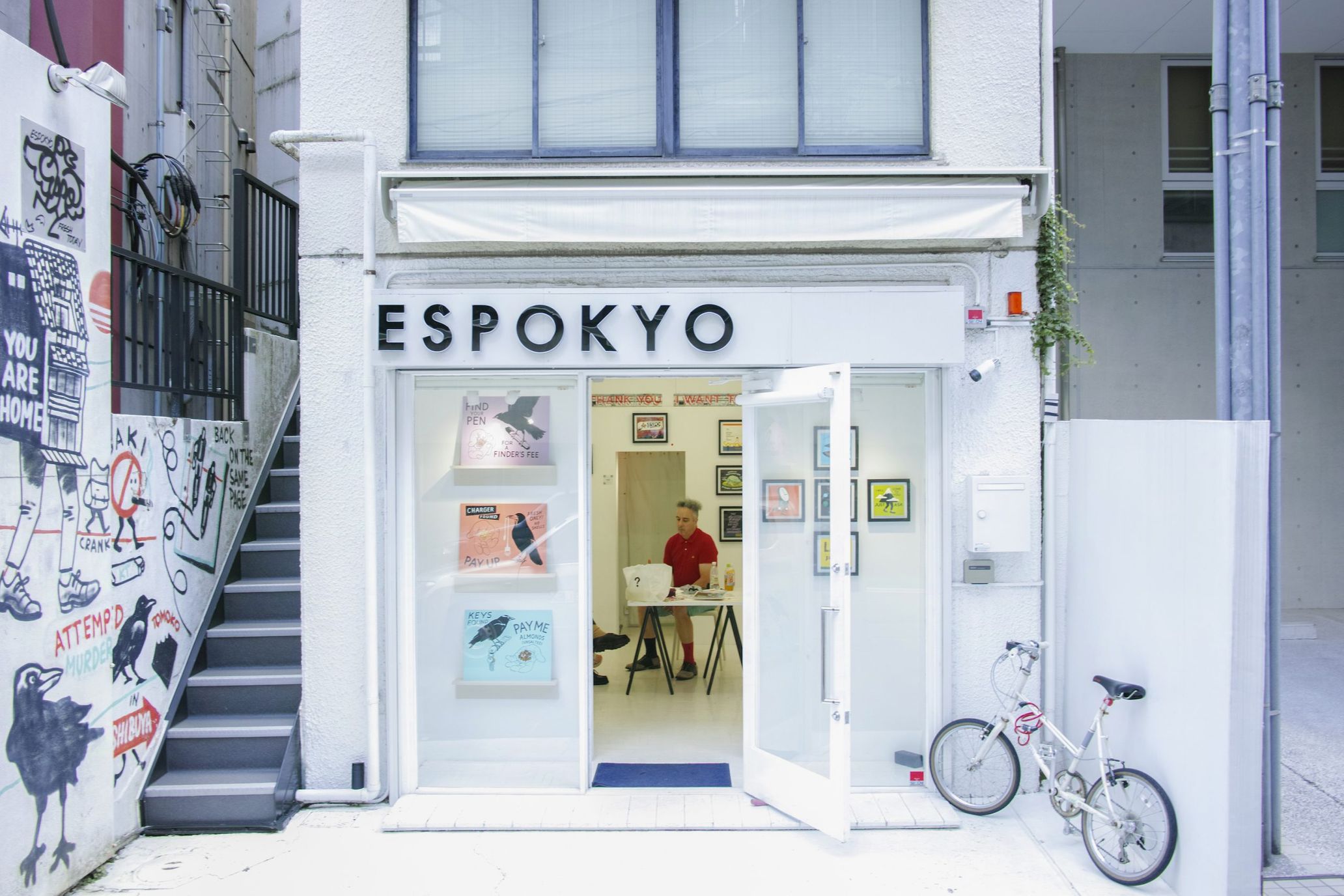
–– Did you start ICY SIGN and ESPO’S ART WORLD for similar reasons?
ESPO: At one point, I found myself constantly moving between my studio and galleries. I would create the work in my studio and then sell it at a gallery. However, galleries mainly attract people looking to buy art, and that felt limiting. It was challenging to connect with people in that environment. So, in 2012, I started ICY SIGN, which eventually led to the opening of ESPO’S ART WORLD. I think it was a good decision to engage with the so-called public, because anyone could casually and easily visit whenever they wanted. Galleries, especially in NYC, are often challenging for outsiders to enter or participate in. Customers who come to ESPO’S ART WORLD, on the other hand, feel so at home that they even put their bags down the first time they visit. Through these close relationships, I finally understood what the public was looking for in artworks.
I began contemplating how to showcase my work while running ICY SIGN between 2012 and 2017. During my exhibition at the Brooklyn Museum, where I was on site for nine months, I realized that my job was to draw in front of people and talk to them. That’s why I created many of my pieces in the museum and met with numerous people.
In September of 2016, I started ESPO’S ART WORLD, which coincided with the election of Donald Trump. The day after, we were deciding whether we should officially hire Matt (ESPO’S ART WORLD staff member who comes to help out in Tokyo during live screen events at ESPOKYO), who you know. We asked him if we should make election T-shirts. The shirt featured a drawing of a house sinking into a body of water with the words “could be worse” next to it. I posted it on Instagram with the caption, “Is this how you’re feeling right now? Then might as well come and get a T-shirt”. About fifty people immediately came to get one, and then the next fifty people showed up. We began printing more on the spot, and that’s where it all started. Since then, we’ve always been mindful of community. Community has always been the foundation of my work, and live printing is a way of liberating it. When a person wears a printed piece, it takes on a certain force.

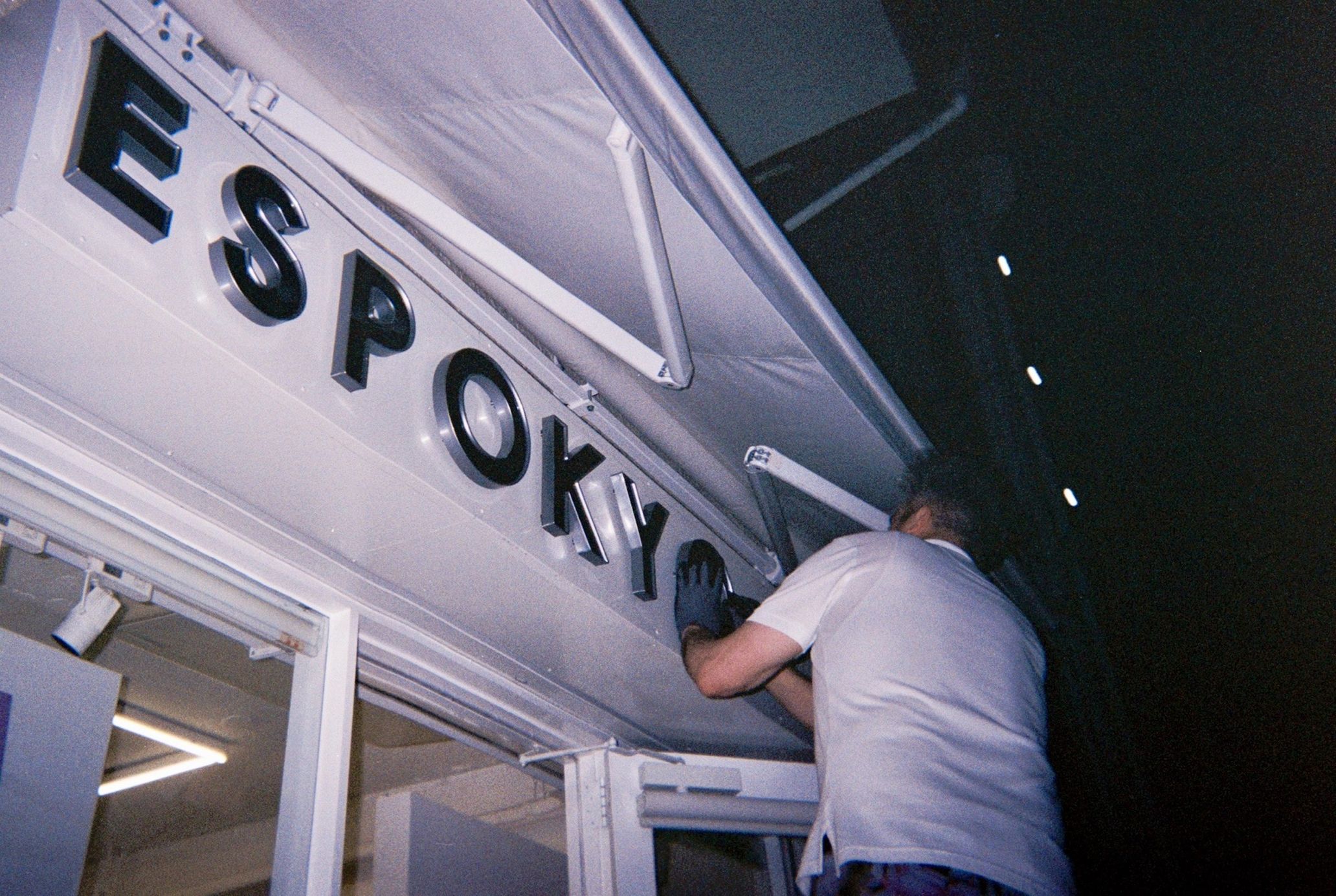
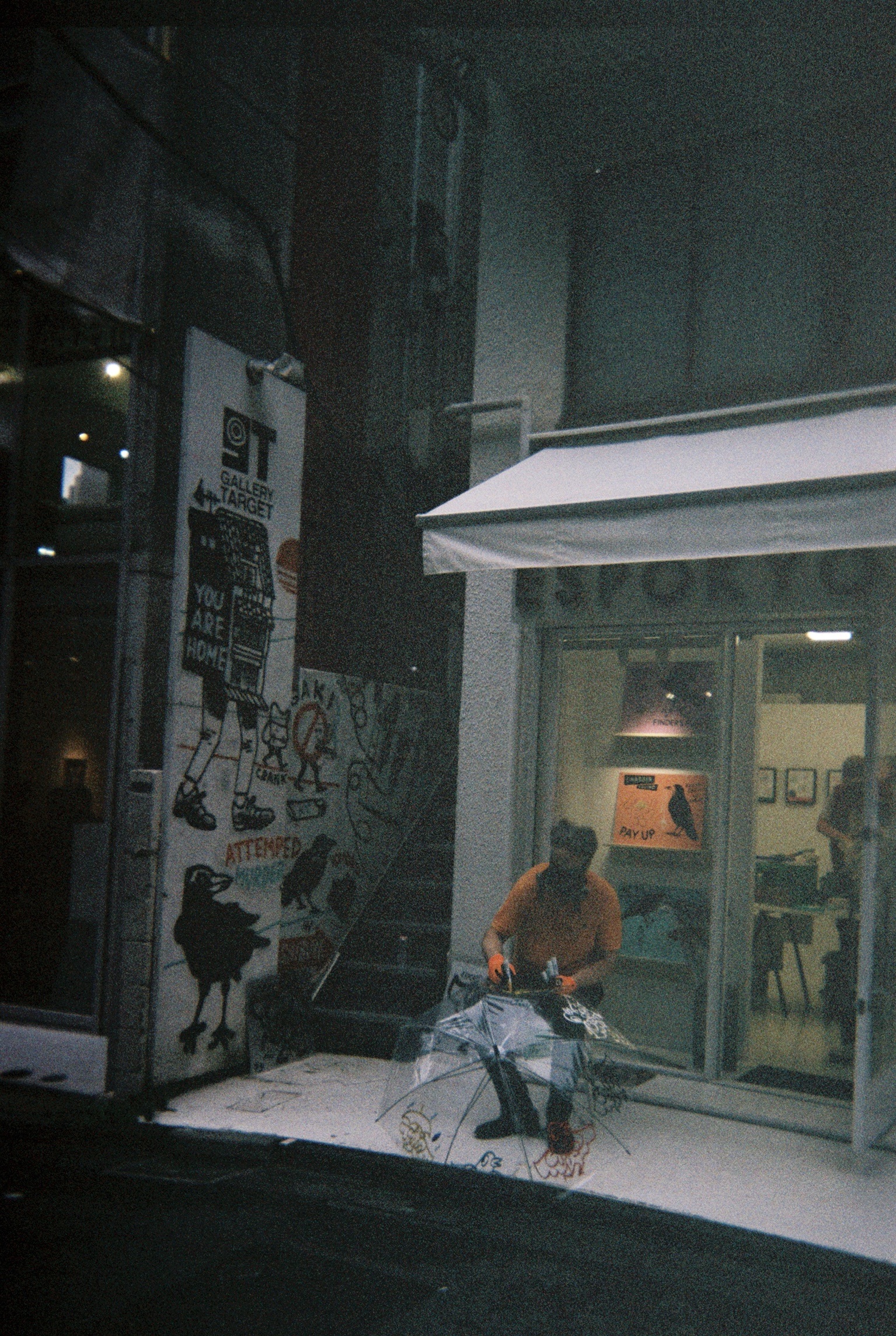
What’s crucial is that emojis condense the way we communicate everyday. They also signify the potential that is spreading around us. We also do live printing at ESPOKYO. The second time around, we depicted the eight famous mountains of Japan. Anyone who saw that drawing would say, “Oh! You drew this” and explain the mountains to me. I believe that was a common reaction because we were able to communicate our interest and fascination to Japanese people through our depiction of mountains. This directly leads to mutual empathy, allowing us to progress and understand more about other issues. Right now, I want to be useful in that way. One day, I hope to become an integral part of that.
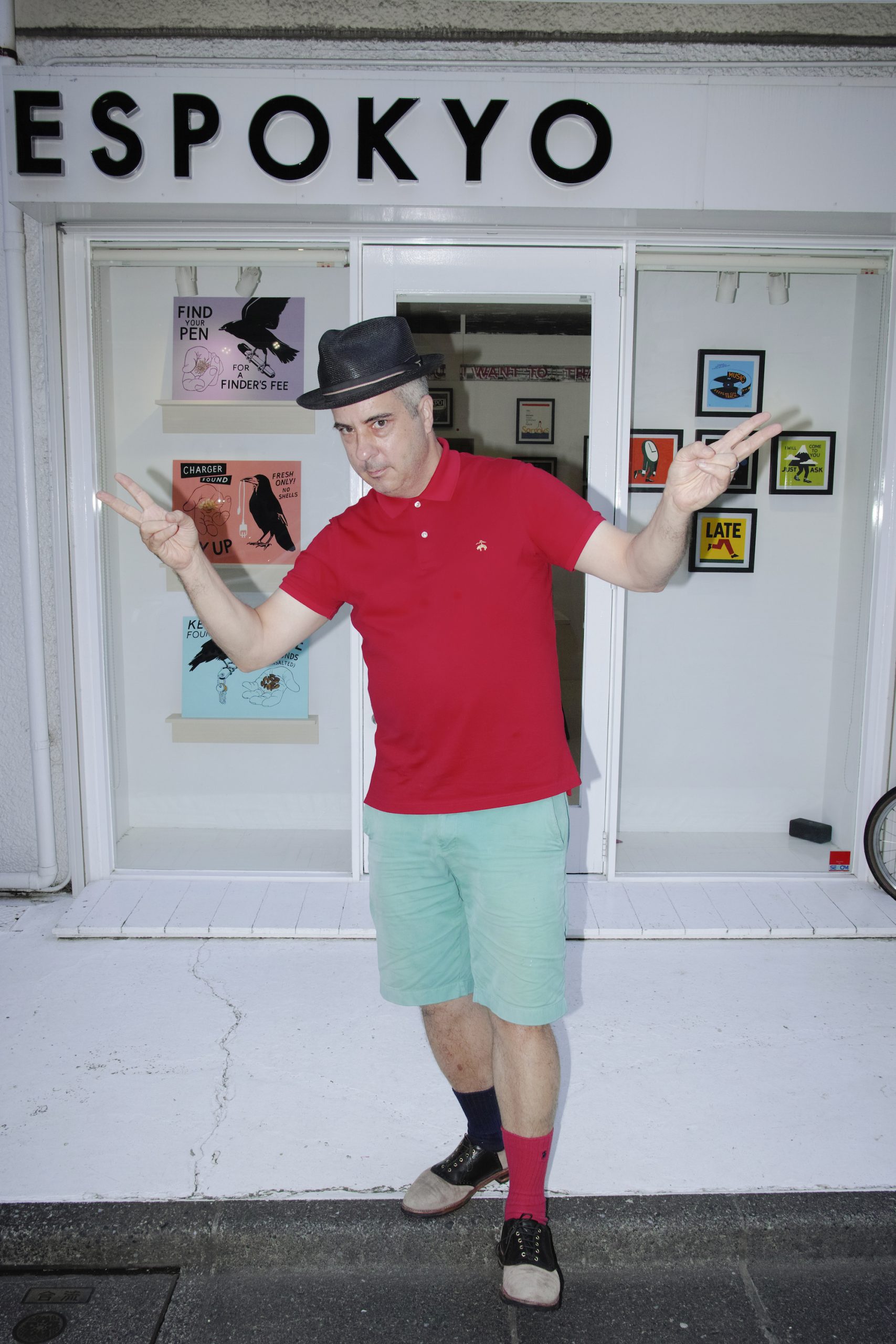
■ESPOKYO
Address:2-23-10 Jingumae Shibuya-ku, Tokyo, 1F
Time:12:00 〜20:00
Closed:Sundays, Mondays, Tuesdays
Official website:https://www.espokyo.jp/
Official Instagram:@espokyo
Photography Rei Amino(Portrait, Interview)、Claudia Heitner(Event)
